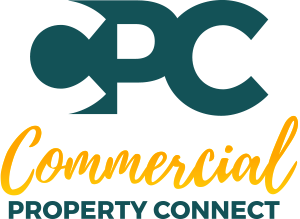My Landlord Wants my Lease Tied to CPI?
In the world of leasing commercial property the current market rate dictates what rate you sign your lease at. Whatever rate you start that lease at, the norm is that there will also be escalations each year during the term. Historically a standard escalation has been around 3% annually. In the hot market of the past 24 months, we have seen this creep in certain segments to be closer to 5% annually, depending on the term of the lease. This structure insures that the landlord has some appreciation in the rate they are collecting, but for the tenant it is still a known event. They can plan their future budgets knowing that the lease expense will increase and by what amount.
We’d like to tell you about another way that landlords may structure a lease to protect themselves against market fluctuations. Some Landlords will ask that you tie your lease escalations to the Consumer Price Index, or CPI. The Consumer Price Index measures the overall change in the price of goods and services that consumers are paying. This index is easily accessible to people by referencing the Bureau of Labor Statistics. The BLS releases changes in this index monthly. An elementary description of how the BLS determines this is to look at a theoretical “basket of goods and services”.
These are all common expenses that the average person incurs and pays for such as food, shelter, fuel etc. The basic calculation is the cost of that basket of goods divided by the cost of the same basket of goods in the prior period. Then that difference is effectively the inflation rate (or deflation in a decreasing cost environment). It should also be noted that these CPI rates can be tracked nationally or regionally.
In either case the Landlord will likely be looking at a straight percentage or increase in CPI as a guide for the escalation in the lease rate. The landlord rarely structures the lease to allow for a DECREASE in the lease rate. So, what does all this mean to the average tenant trying to decide what they should or should not sign up for? If you look back to the 60’s the CPI would show an average CPI around 3.8%. So that sounds almost the same as just taking a straight percentage increase every year…right? Well not exactly. If there is one thing we have learned in the era of COVID and post COVID it is that nothing is “average”. All of us know that there is inflation right now. We have all seen how much it costs us to drive to work or go to the grocery store go up. The sudden explosion of demand post COVID coupled with hitches in the supply chain are causing prices to rise for just about everything.
Let’s take an actual look back 10 years to see what a tenant that signed a lease 10 years ago would have experienced in both cases.
This might not be so bad right? You got to enjoy lower rates for 9 of the 10 years, which over the life of the lease means a lot of money that stayed in your pocket. You are right- this would have been a favorable scenario. It is important to also note that 10 years ago a landlord might have placed a “floor rate” in the lease. Meaning there was a minimum number that the lease rate would increase even if the CPI was lower. For example, they may have said the increase would never drop below 3% or something of that nature. This would protect the landlord during slow growth years but allow them to capitalize on high growth years.
Now, let’s talk about something that could come up in this environment that could be problematic for a tenant. If you experience a high increase a year or two into your term you have reset your rate to that higher rate. If things normalize and return to the averages of history, you would still have been stepped up to the higher rate as the lowest point, so you are paying more, earlier in the term, and therefore more over the life of the lease. For some businesses this sudden jump could be problematic.
The changing economic environments can bring varying trends in how a lease might be structured. Not only the lease rate and structure, but the terms and other expenses are all part of the negotiation. The average tenant will not know what is reasonable for the current environment and what is over the line. You need a professional to help guide you to get the best possible structure available at that point in time. The professional will work with you to find out what is most important to you and your business and negotiate to customize a lease to your needs.



